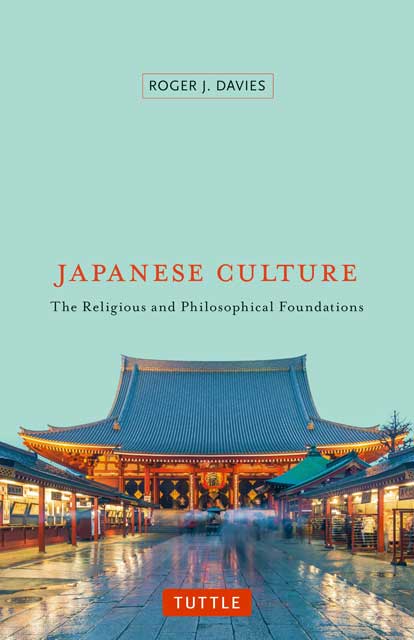Japanese Culture: The Religious and Philosophical Foundations
Japanese Culture: The Religious and Philosophical Foundations
Tuttle (2016)
ISBN: 978-4805311639
Paperback, 160 pp
What have been the most powerful influences shaping Japan over its long history? Exactly what has each of these influences contributed to make Japan what it is today?
Professor Roger J. Davis has put together this interesting book from his college lectures designed for international business students studying in an MBA program at Hitotsubashi University in Tokyo.
At 160 pages (125 without the appendixes), it is not an exhausting tome, but it is enough to inform and entertain any reader wanting some of the basics.
The first two chapters are spent not on expounding on the most significant influences, but on the basics of where the Japanese people came from and what models social scientists usually use in dissecting civilizations.
From there, there are six more chapters, with each chapter dealing with one of what Davies says are the main influences which helped shape Japanese society. Arranged chronologically, they are: Shinto, Buddhism, Taoism, Zen, Confucianism and Western Influences in the Modern Era.
Each chapter ends with extra notes on that chapter's main topic, followed by discussion questions. Some of the discussion questions can be answered quickly, even by novices. An example from the Western Influences chapter would be; "It is often claimed that contemporary Japanese society is highly secular and materialistic. Do you agree or disagree?" Anybody who has lived in Japan for any period of time can offer a reasonable opinion on this.
Other discussion questions require a deeper knowledge to even attempt an answer. An example of this from the Zen chapter would be; "Although Zen is not the largest sect in Japan, it is the most popular and widely recognized in the West. Why is it not as popular as other Buddhist sects in Japan?"
For all of its modern technological wonders, Japan got off to a late start according to Edwin Reischaeur, former US Ambassador to Japan, who is frequently quoted throughout the book, and who has several entries in the helpful six-page bibliography.
Reischaeur is quoted as saying, "The (Japanese) islands were thousands of years behind Europe, the Middle East, the Indian subcontinent and China in the introduction of agriculture and centuries behind in the use of bronze and iron."
One of the more interesting sections delineates how the Japanese government started and propagated state Shinto - with special focus on education and thought police - to move the Japanese citizens towards accepting war. Shinto and state Shinto were very different things.
Reischaeur makes the case that state Shinto was "a ruthless attack on Buddhism." It sure was an attack on something.
Overall, the book would be interesting for almost any reader, but if you are already an expert on the religious and philosophical foundations of Japan, you might find the depth a little lacking.
Note: This book is a follow up to Davies' well-acclaimed "The Japanese Mind: Understanding Contemporary Japanese Culture," which was published in 2002.
Review by Marshall Hughes.
Buy this book from Amazon USA | UK | Japan
Looking to buy Japanese things directly from Japan? GoodsFromJapan is here to help.
More Japan Book Reviews
All About Japan - Stories, Songs, Crafts and Games for Kids
Black Ships Illustrated Japanese History
Christianity Social Justice And The Japanese American Incarceration During World War II
Exposure: From President to Whistleblower at Olympus
Japanese Kokeshi Dolls: The Woodcraft and Culture of Japan's Iconic Wooden Dolls
Japanese Dolls: The Fascinating World of Ningyo
Reflections on Tsuda Umeko: Pioneer of Women's Education in Japan
Tokyo Outdoors: 45 Walks Hikes & Cycling Routes
Satsuma Rebellion - Illustrated Japanese History
© GoodsFromJapan.com



No comments:
Post a Comment